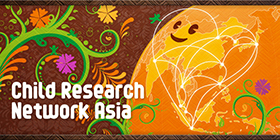*This article is a perspective of an external researcher for CRN based on the evidences found in "Questionnaire on Daily Life of Children in Five East Asian Cities: Tokyo, Seoul, Beijing, Shanghai, and Taipei."
Survey Subject
This survey, conducted by Benesse Educational Research and Development Center in 2005, examines children's daily lives in five Asian metropolitan areas; Tokyo, Seoul, Beijing, Shanghai and Taipei. It looks at the ways in which Asian children in each of the five cities spend time in daily life and the relation to parents' awareness and attitudes towards child-rearing. It also reveals how Asian fathers participate in daily household chores and child-rearing and the present level of mothers' satisfaction with support from their spouse. The survey has been designed by the authorities on child education to examine similarities and differences in Asian parenting style in the proper context and the survey results are analyzed with detailed commentary. The survey was composed of nearly identical questions for each metropolitan area with minor adjustments made to reflect regional differences.
Survey topics
1. Daily schedule of children
2. Type of extracurricular lessons by children
3. Media use
4. Expectations of higher education and views on discipline
5. Expectations of children's future
6. Aspect of parenting to which parents devote the most effort
7. Mothers' views on child-rearing
8. Fathers' participation in household chores and child-rearing
9. Community support for families raising children
Survey period, sample, area and method
* Survey area is described as Tokyo, Seoul and Taipei, though it includes the neighboring region
* The sex and age groups of target children in the sample are evenly divided between girls and boys, and each age group (from 3 to 6) comprise a quarter of the total sample.
- 1. Research Design Outline
- 2. Summary Overview in Comparative Perspective
- 3. Children and Their Mothers in Beijing and Shanghai
- 4. Children and Their Families in Tokyo
Survey Subject
This survey, conducted by Benesse Educational Research and Development Center in 2005, examines children's daily lives in five Asian metropolitan areas; Tokyo, Seoul, Beijing, Shanghai and Taipei. It looks at the ways in which Asian children in each of the five cities spend time in daily life and the relation to parents' awareness and attitudes towards child-rearing. It also reveals how Asian fathers participate in daily household chores and child-rearing and the present level of mothers' satisfaction with support from their spouse. The survey has been designed by the authorities on child education to examine similarities and differences in Asian parenting style in the proper context and the survey results are analyzed with detailed commentary. The survey was composed of nearly identical questions for each metropolitan area with minor adjustments made to reflect regional differences.
Survey topics
1. Daily schedule of children
2. Type of extracurricular lessons by children
3. Media use
4. Expectations of higher education and views on discipline
5. Expectations of children's future
6. Aspect of parenting to which parents devote the most effort
7. Mothers' views on child-rearing
8. Fathers' participation in household chores and child-rearing
9. Community support for families raising children
Survey period, sample, area and method
|
Tokyo |
Seoul |
Beijing |
Shanghai |
Taipei | |
|
Survey Period: |
March 2005 |
April 2005 |
March 2005 |
March 2005 |
May to June 2005 |
|
Survey Sample: |
Parents of pre-school children between 3 to 6 | ||||
|
1,007 |
941 |
992 |
935 |
2,259 | |
|
Survey Area: |
Urban areas within 40 km from Tokyo Station |
Seoul, Gyeonggi-do |
Beijing |
Shanghai |
Taipei, Taipei County,Keelung, Taoyuan County |
|
Survey Method |
Distribution of questionnaires via mail | Distribution of questionnaires at nursery and kindergarten | Distribution of questionnaires at pre-school |
Distribution of questionnaires at pre-school |
Distribution of questionnaires via mail |
* The sex and age groups of target children in the sample are evenly divided between girls and boys, and each age group (from 3 to 6) comprise a quarter of the total sample.














